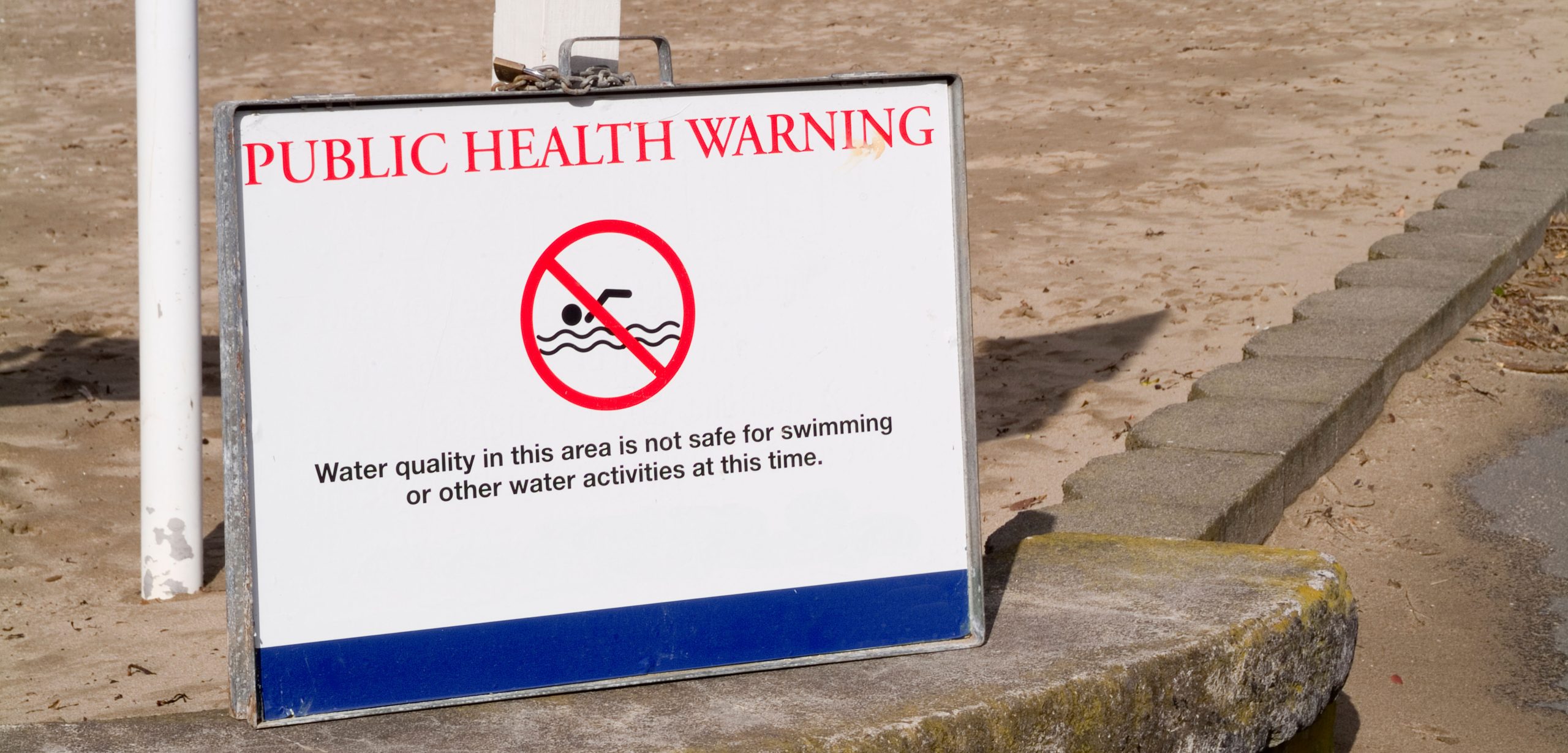Surf and Turd
Sheltered beaches with weak waves stagnate and accumulate bacteria.
Article body copy
This summer, be careful when visiting quiet, sheltered beaches with small waves. As new research shows, sheltered beaches are more likely to be contaminated by higher concentrations of fecal microbes than beaches with surf facing the open ocean.
Sheltered beaches are found in bays, sounds, and estuaries protected by barrier islands and hidden away from strong winds and currents. They are also located in coves of freshwater lakes and along brackish-water canals. Some sheltered beaches are natural and others are manmade.
In the United States, coastal states regularly monitor water quality along popular beaches for indicators of fecal bacteria from sewage spills, storm-water runoff, and poop from gulls and pets. Fecal microbes can cause stomach ailments, such as diarrhea, if contaminated water is swallowed.
But geographic features mean that some beaches retain higher contaminant concentrations than others. Physical oceanographer Zhixuan Feng and his colleagues recently showed that in Florida, sheltered beaches with small waves are far more likely to exceed the state’s thresholds for fecal bacteria indicators than beaches with high-energy waves. Big waves wash out the sand’s lurking fecal organisms and also carve out steeper beach slopes, which create deeper water close to shore that allows for faster diluting and dispersing of bacteria.
On Florida’s Gulf Coast, beaches exceed the state’s thresholds for fecal bacteria indicators significantly more often than Atlantic beaches—probably because gulf waves are usually smaller than Atlantic waves, Feng says.
On an individual beach, there can be hot spots of fecal microbial contamination, Feng says, explaining that bacteria accumulate in the relatively dry sand at the far upper reaches of the tidal zone, where they can become stranded after an unusually high tide.
High tides can also deposit decaying seaweed and other plant flotsam high up on the beach. These dead plants provide an ideal environment for microbial growth: a quiet, humid shelter from sun, wind, ultraviolet light, and surf. Plant decay provides food for microbes, which grow rapidly in population over days or weeks.
“At the very top of the tidal zone, you have less cleansing of the sand by water, so the microorganisms are not washed away, and then you have further depositions of seaweed and these microorganisms,” says environmental engineer Helena Solo-Gabriele, who also worked on the new research. “You see an accumulation over time.”
Eventually, tides capture the accumulated microbes, carry them down the beach slope, and deposit them in sand in the intertidal zone where children play in the calm, shallow water. “That’s a place where you need to be careful with children because they like it there,” she says. From the intertidal zone, fecal microbes can be washed into the surf where bathers may swallow them.
Before heading out to the beach, Solo-Gabriele suggests checking state web sites for listings of beach advisories and obeying posted warning signs not to swim. Always wash your hands before you eat at the beach, and shower soon after you leave.

